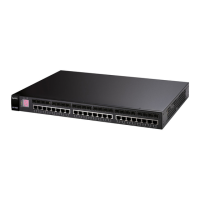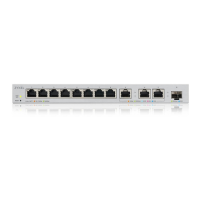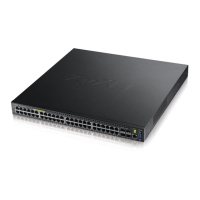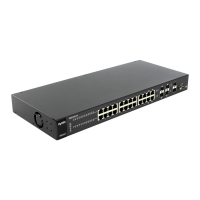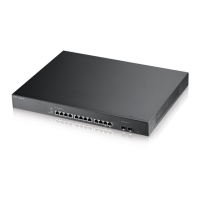Chapter 35 Error-Disable
XGS4600 Series User’s Guide
359
The following table describes the labels in this screen.
35.4 CPU Protection Configuration
Use this screen to limit the maximum number of control packets (ARP, BPDU and/or IGMP) that the
Switch can receive or transmit on a port. Click the Click Here link next to CPU protection in the
Advanced Application > Errdisable screen to display the screen as shown.
Note: After you configure this screen, make sure you also enable error detection for the
specific control packets in the Advanced Application > Errdisable > Errdisable Detect
Table 159 Advanced Application > Errdisable > Errdisable Status
LABEL DESCRIPTION
Inactive-reason
mode reset
Port List Enter the number of the ports (separated by a comma) on which you want to reset inactive-
reason status. In stacking mode, the first number represents the slot and the second the port
number. Enter 1/1–1/24,2/23 for ports 1 to 24 for the Switch in slot 1 and port 23 for the Switch in
slot 2, for example.
Cause Select the cause of inactive-reason mode you want to reset here.
Reset Press to reset the specified ports to handle ARP, BPDU or IGMP packets instead of ignoring them,
if the ports is in inactive-reason mode.
Errdisable Status
SLOT This field appears only in stacking mode. Click the drop-down list to choose the slot number of
the Switch in a stack.
Port This field displays the port number. In stacking mode, the first number represents the slot ID and
the second is the port number. Please note that the default stacking ports (the last two ports of
your Switch) cannot be configured. They are reserved for stacking only.
Cause This displays the type of the control packet received on the port or the feature enabled on the
port and causing the Switch to take the specified action.
Active This field displays whether the control packets (ARP, BPDU, and/or IGMP) on the port is being
detected or not. It also shows whether loop guard, anti-arp scanning, BPDU guard or ZULD is
enabled on the port.
Mode This field shows the action that the Switch takes for the cause.
• inactive-port – The Switch disables the port.
• inactive-reason – The Switch drops all the specified control packets (such as BPDU) on the
port.
• rate-limitation – The Switch drops the additional control packets the ports has to handle in
every one second.
Rate This field displays how many control packets this port can receive or transmit per second. It can
be adjusted in CPU Protection. 0 means no rate limit.
Status This field displays the errdisable status
• Forwarding: The Switch is forwarding packets. Rate-limitation mode is always in Forwarding
status.
• Err-disable: The Switch disables the port on which the control packets are received
(inactive-port) or drops specified control packets on the port (inactive-reason).
Recovery
Time Left
(secs)
This field displays the time (seconds) left before the ports becomes active of Errdisable
Recovery.
Total
Dropped
This field displays the total packet number dropped by this port where the packet rate exceeds
the rate of mode rate-limitation.
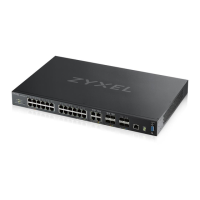
